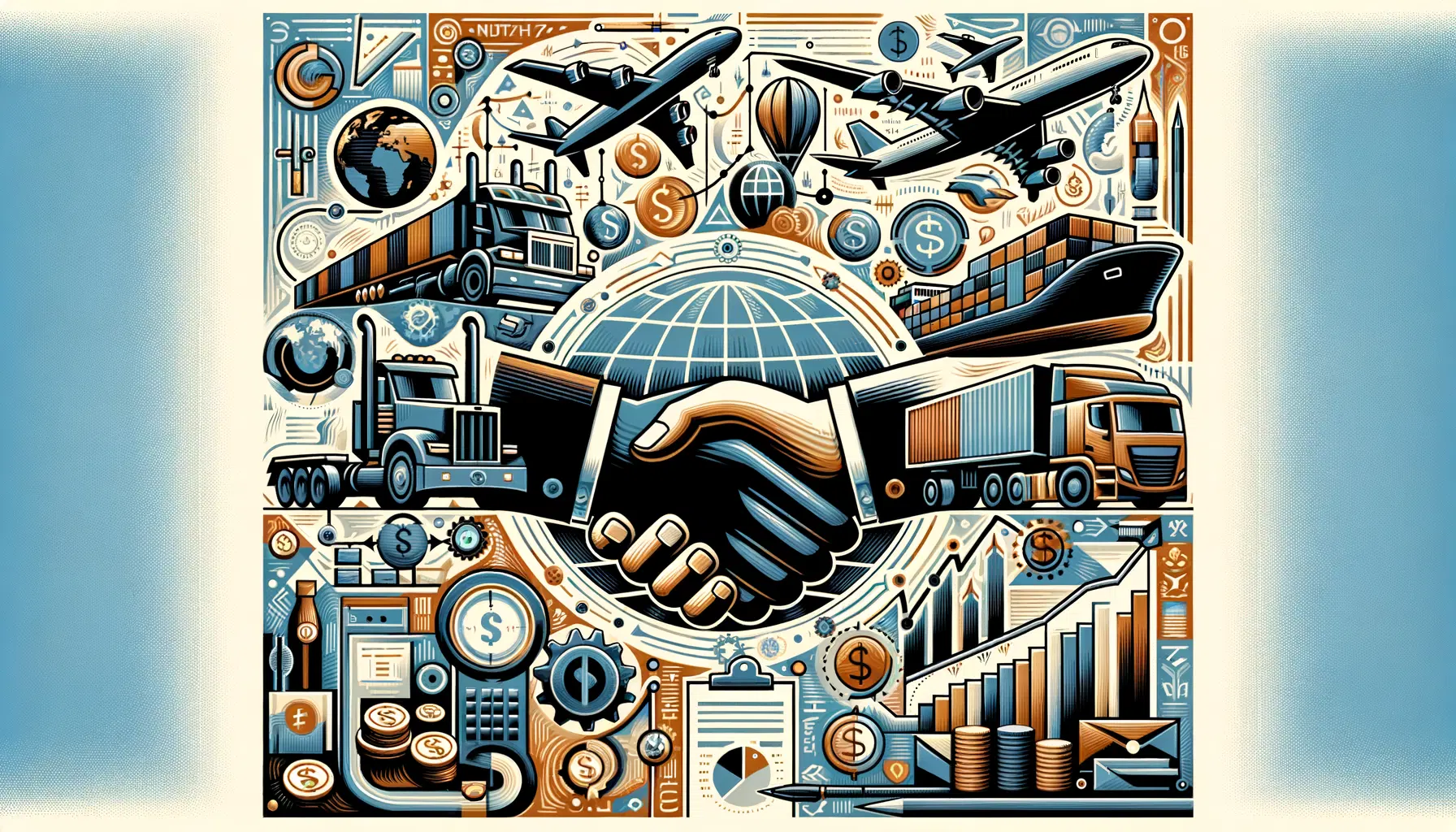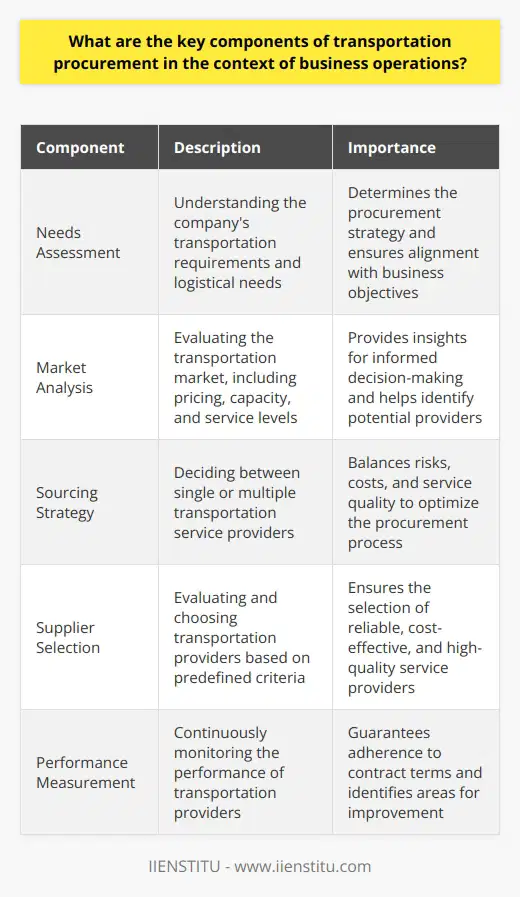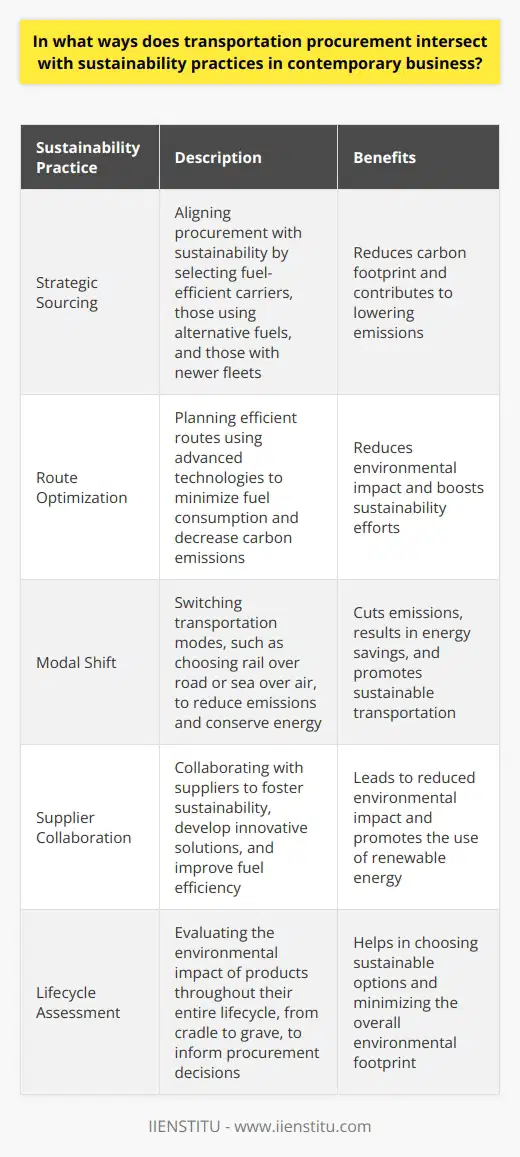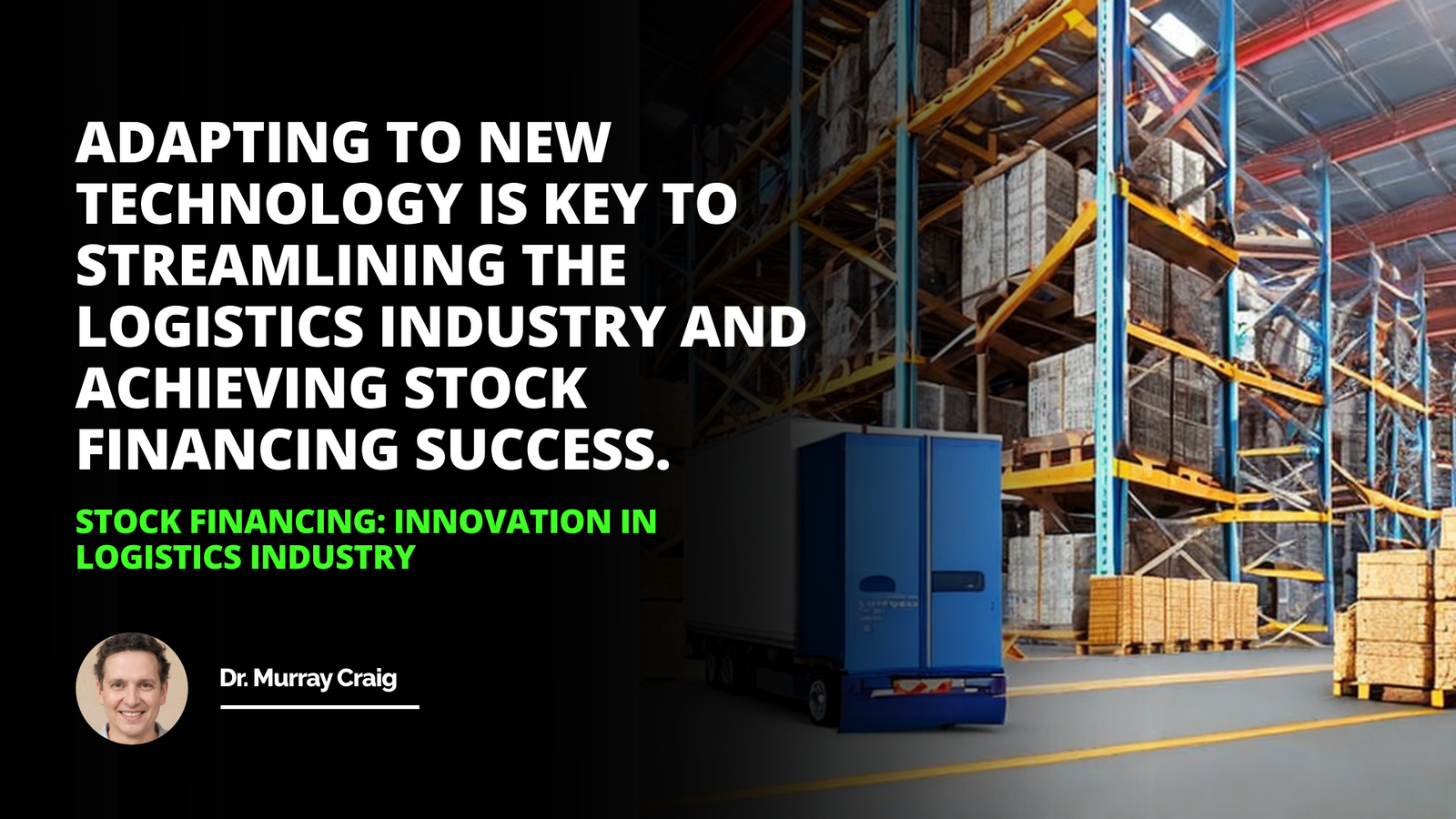
The integral role of transportation procurement within the supply chain cannot be overstated in the contemporary business landscape. This process encompasses the strategizing, sourcing, negotiating, and implementing of the most efficient, cost-effective methods for moving goods from one point to another.
The complexity and criticality of this function have escalated with the global expansion of markets and the intricate web of logistics networks that support this growth. Understanding the nuances of transportation procurement is crucial for businesses looking to streamline operations and bolster customer satisfaction.
This guide serves as a comprehensive examination of the multifaceted nature of transportation procurement, underscored by real-world applications and an exploration of emerging technologies poised to revolutionize this essential business function.
The Importance of Transportation Procurement
Impact on supply chain efficiency
In an era marked by rapid global trade and heightened customer expectations, transportation procurement has emerged as a central pillar of supply chain efficiency. The deliberate selection of transport service providers and the optimization of delivery routes are critical determinants in achieving minimal lead times and reducing the risk of supply chain disruptions.
As businesses endeavor to refine their operations, identifying logistics strategies that align with company objectives becomes paramount, as does the ability to adapt to fluctuating demands and market conditions.
Potential Cost savings
Beyond the operational advantages, a well-executed transportation procurement strategy can yield significant cost savings. The ability to navigate the complexities of transportation economics – from fuel surcharges to load optimization – allows businesses to extract greater value from each dollar spent on logistics.
Collaborating With Departments To Optimize Supply Chain İnterview Question İnsights
Most Searched Prioritize Multiple Shipments İnterview Question
Contract negotiations and long-term partnerships with reliable carriers can further amplify these savings, indeed for those companies proactive enough to leverage volume discounts and performance-based incentives within their contracts.
Influence on customer satisfaction

The end-to-end experience offered to a customer is heavily influenced by the efficiency and reliability of the transportation options a business employs. Rapid, accurate, and damage-free delivery is a direct contributor to customer satisfaction and retention. In this light, transportation procurement becomes a powerful tool for enhancing brand reputation and securing a competitive advantage through service quality.
Understanding Transportation Procurement Process
Identification of transportation needs
Before a business can engage with transportation service providers, it must thoroughly understand its own needs. Factors such as shipment frequency, volume, destination, and the sensitivity of transported goods should be analyzed to shape the procurement strategy. Thorough identification of transportation requirements ensures that only the most suitable providers are selected, mitigating the risk of mismatches in service level expectations and actual delivery performance.
Selection of service providers
The selection of service providers is a process requiring a delicate balance between cost and quality. Businesses must investigate carriers' reputability, capacity, coverage area, and compliance with industry standards. For those engaged in logistics online courses or online certification courses, it is imperative to appreciate the significance of due diligence in this phase to safeguard against potential partner shortfalls that could jeopardize the entire supply chain.
Negotiation of contracts
Negotiation is an art in the transportation procurement process. The ability to craft contracts that incentivize both parties – client and carrier – is essential for a sustainable working relationship.
Aspects such as rates, service level agreements, indemnities, and performance measurements must be articulated clearly, with contingencies in place for unforeseen circumstances. Successful negotiations are founded on a comprehensive understanding of both parties' needs and limitations.
Challenges in Transportation Procurement
Dynamic nature of logistics sector

The logistics sector's dynamic nature presents an ongoing challenge for transportation procurement specialists. Rapidly evolving market conditions, driven by economic fluctuations, technological advancements, or geopolitical events, have profound effects on the availability and cost of transportation services.
The capacity to swiftly adapt procurement strategies in response to these changes is a defining trait of successful supply chain management.
Complex regulatory landscape
Navigating the complex regulatory landscape governing transportation is another trial businesses face. Regulations affecting the transport of goods vary greatly by region and mode of transportation.
Compliance can bear considerable implications for a business's operations and financial standings, necessitating focused attention on staying abreast of the legal framework within which they operate.
Integration with overall supply chain strategy
Seamlessly integrating transportation procurement with the broader supply chain strategy is a significant hurdle, yet vital for achieving organizational coherence and the optimal function of the supply chain. It requires an elevated level of collaboration and communication across various departments, as well as a consolidated view of the organization’s logistical goals.
Future Prospects of Transportation Procurement
Predictions for the future
As businesses move steadfastly into the future, the trajectory of transportation procurement will likely continue to align with technological innovation and sustainability initiatives. Advanced analytics, increased automation, and a heightened emphasis on carbon footprint reduction will all factor into procurement processes.
Relevance of sustainable procurement strategies
Sustainable procurement strategies are increasingly gaining traction, reflecting the growing consensus on the importance of environmental stewardship within supply chains. This evolution towards greener logistics necessitates a reevaluation of current practices and the adoption of measures that support economic, environmental, and social objectives harmoniously.
This exploration into the realm of transportation procurement offers insight into its complex nature and significance within modern business operations. From streamlining supply chains and nurturing customer relationships to harnessing new technologies and meeting the demands of a rapidly changing world, transportation procurement sits at the crossroads of numerous critical business outcomes. As businesses strive to excel within their markets, understanding and mastering transportation procurement will remain an indispensable component of strategic success.
Frequently Asked Questions
What are the key components of transportation procurement in the context of business operations?
Understanding Transportation Procurement
Transportation procurement forms a critical element of supply chain management. It involves sourcing and acquiring transportation services. These services ensure the movement of goods across the supply chain.
Key Components of Transportation Procurement
Needs Assessment is crucial. Businesses must understand what transportation services they require. This determines their logistical needs and impacts procurement strategy.
Market Analysis follows. Companies must analyze the transportation market. Understanding pricing, capacity, and service levels is a must. It guides informed procurement decisions.
Sourcing Strategy develops after the market analysis. Businesses decide on single or multiple service providers. This strategy balances risks, costs, and service quality.
Supplier Selection is a methodical process. Companies evaluate potential transportation providers against set criteria. Cost, reliability, and service scope often form these criteria.
Contract Negotiation is a delicate phase. Businesses negotiate terms with providers. They aim for favorable rates, service levels, and contract flexibility.
Order Management comes next. Companies manage transport orders effectively. It requires robust processes for order placement, tracking, and receipt.
Capacity Management is ongoing. Businesses must ensure adequate transportation capacity. It avoids delays and ensures timely delivery.
Performance Measurement is continuous. Businesses must monitor provider performance. It ensures adherence to contract terms and identifies improvement areas.
Transportation procurement is complex yet essential. It demands attention to detail and strategic thinking. Short sentences ensure this complex topic remains clear and digestible.

How can effective transportation procurement strategies facilitate cost minimization and efficiency in logistics?
Effective Transportation Procurement Strategies
Understanding Procurement in Logistics
Procurement in logistics entails purchasing transportation services. These services move goods from origin to destination. Companies aim to minimize costs. They also strive for operational efficiency. Achieving these goals requires smart strategies. These strategies focus on cost control and value.
Aligning Goals with Strategies
Firms must align procurement strategies with business goals. Cost minimization is a common goal. Efficiency drives competitiveness. Strategies ensure logistic activities support these goals. Proper alignment leads to synergetic outcomes.
Building Strong Carrier Relationships
Fostering partnerships with carriers is essential. Strong relationships lead to better rates and service levels. Consistent business often results in preferred customer status. This preference can secure capacity at competitive rates.
Leveraging Technology for Efficiency
Investing in technologies enables better procurement processes. Automation tools speed up procurement. They free up staff for strategic tasks. Data analytics predicts cost trends. It guides informed decision-making.
Conducting Regular Market Analysis
Regular market analysis keeps companies informed. Knowledge of market trends is pivotal. It enables negotiation from a well-informed standpoint. Firms can then secure favorable terms.
Embracing Flexible Transportation Options
Flexibility in transportation options is key. Utilizing a mix of transportation modes can cut costs. It also ensures timely deliveries. Balancing cost with service level is essential.
Implementing Strong Negotiation Tactics
Effective negotiation skills secure better contracts. Negotiators must understand market dynamics. They should also grasp service-level requirements. Equipped with these, they can achieve favorable terms.
Utilizing Bulk Buying and Consolidation
Bulk buying often leads to lower costs. Consolidation of shipments maximizes container use. It reduces per unit transport costs. This approach is efficient and cost-effective.
Analyzing Total Cost of Ownership
Consideration of the total cost of ownership is crucial. This analysis transcends the purchase price. It includes delivery, service, and maintenance costs. Firms can make better procurement decisions.
Regular Reviews and Adjustments
Adaptability ensures long-term success. Regularly reviewing and adjusting strategies is paramount. Supply chain dynamics change rapidly. Companies must adapt swiftly to sustain efficiency.
Effective transportation procurement strategies mix several tactics. Alignment, relationships, technology, and flexibility matter. Negotiation, consolidation, and total cost analysis are also vital. Regular reviews and adjustments keep strategies relevant. These elements work together. They foster cost minimization and efficiency in logistics.

In what ways does transportation procurement intersect with sustainability practices in contemporary business?
Transportation Procurement and Sustainability
Understanding the Intersection
Transportation procurement anchors logistics. It fuels businesses. Yet, its impact stretches beyond economy. It touches on sustainability. You need to consider the environment. Modern businesses cannot ignore this fact. They have embraced sustainable practices. Such practices reduce carbon footprints. They also conserve natural resources.
Strategic Sourcing
Strategic sourcing is key. It aligns with sustainability. Companies seek fuel-efficient carriers. They prioritize those using alternative fuels. They also choose carriers with newer fleets. All these factors contribute to lowering emissions.
Route Optimization
Route optimization plays a critical part. It involves planning efficient routes. This reduces fuel consumption. It also decreases carbon emissions. Technologies enable smart routing. As a result, they boost sustainability.
Modal Shift
Modal shift is another important aspect. Companies often switch transportation modes. They might choose rail over road. Or opt sea over air. These decisions cut emissions. They often result in energy savings.
Supplier Collaboration
Companies collaborate with suppliers. This fosters sustainability. Joint efforts can lead to innovative solutions. These solutions often improve fuel efficiency. They might also lead to using renewable energy. Results include reduced environmental impact.
Capacity Utilization
Capacity utilization is crucial. It ensures no space goes wasted. Full loads mean fewer trips. Fewer trips imply less fuel use. It's simple math. It is also good for our planet.
Green Procurement Policies
Businesses implement green procurement policies. These policies dictate sustainable practices. They enforce the selection of eco-friendly suppliers. This guides companies towards sustainability.
Measurement and Reporting
Measurement is necessary. Reporting is too. They track environmental impact. Tools like the Carbon Disclosure Project help. They allow businesses to measure emissions. They bring accountability. Companies then strive for improvement.
Lifecycle Assessment
Lifecycle assessment offers a comprehensive view. It evaluates the environmental impact. It looks at the product's entire lifecycle. From cradle to grave. This informs procurement decisions. It helps in choosing sustainable options.
Training and Development
Education is essential. Training informs employees about sustainability. Development programs expand their knowledge. They promote the adoption of green practices.
Active Participation
Companies actively participate in sustainability. It's not passive. They join programs like SmartWay. This EPA initiative reduces transportation-related emissions. Active involvement ensures continuous improvement.
Continuous Improvement
Continuous improvement is a mantra. It's a commitment to better performance. Sustainability is not a one-time achievement. It's an ongoing journey. Businesses constantly look for ways to reduce impact.
Multi-Stakeholder Engagement
Engaging multiple stakeholders is common. It enhances sustainability efforts. Clients, suppliers, and logistics providers unite. They share the sustainability objective. They work together to achieve it.
Businesses realize the importance of sustainable transportation procurement. It's not only about cost anymore. It's about the planet. Thus, they integrate sustainable practices. These practices address environmental concerns. They also benefit the business. They improve the brand image. They might lead to cost savings. Businesses no longer question if they should act. The question is how best to do it. Transportation procurement and sustainability are inseparable. They must march together towards a greener future.



